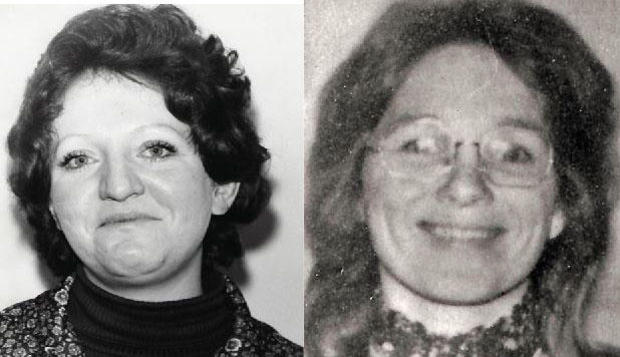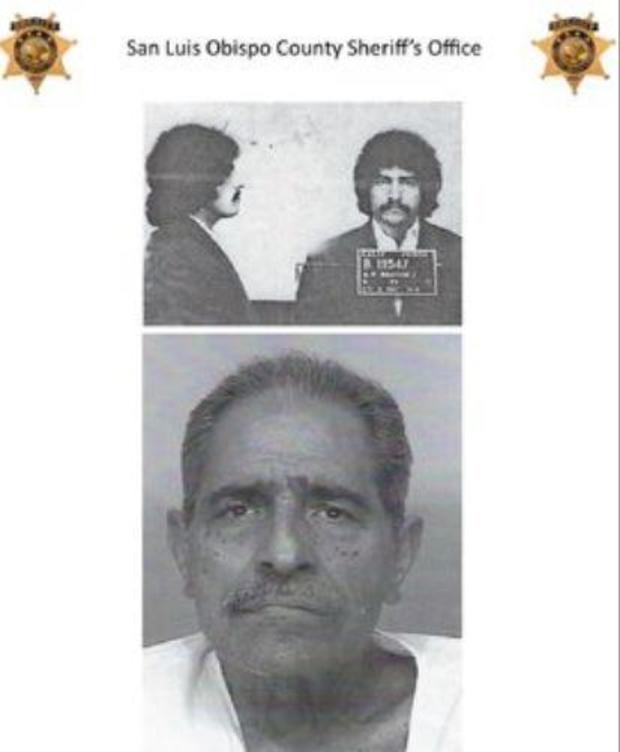Old razor, new DNA technique lead to suspect in 1970s cold case murders
A new DNA technique and an old razor led California investigators to identify the same suspect in two decades-old unsolved murders. Officials said familial searching of a state criminal DNA database led investigators to Arthur Rudy Martinez — who died in a Washington prison in 2014 — and a DNA match from one of his old razors reportedly confirmed that he was the person who killed Jane Antunez in 1977 and Patricia Dwyer in 1978. The two killings happened a few miles apart in Atascadero.
"Solving these cases brings closure to the families and the communities," San Luis Obispo County Sheriff Ian Parkinson said at a press conference announcing the development Wednesday. "Many people up in that community still recall those two homicides that occurred at those times."
The body of 30-year-old Antunez was found on Nov. 18, 1977 in the back seat of her car on a dirt road not far from her home, Parkinson said. She had been sexually assaulted and her throat had been cut. Antunez was supposed to be on her way to her best friend's home the previous day, but never made it. Witnesses reported she had picked up a man in her car, but that report was never confirmed, investigators say.
Less than two months later, on Jan. 11. 1978, investigators found the body of the 28-year-old Patricia Dwyer on the floor of her home. She had been sexually assaulted and stabbed in the chest with a knife from her kitchen drawer. Dwyer had told a friend that she was going to the grocery store and then staying home to clean, investigators say. Friends said she would never have allowed a stranger into her home, but she kept a key under the mat outside her front door, Parkinson said.
In both slayings, the victims' arms had been bound with bindings found at the scene, Parkinson said. Because of the similarities, the original case investigators suspected the murders were linked.
While the victims did not know each other, they had mutual friends and both were known to frequent the Tally Ho bar in Atascadero. Martinez had come across the radar of original case investigators because he was a parolee and lived in the area, according to Parkinson. Martinez moved to the area in May 1977 and was working in a nearby welding shop after serving time on convictions for attempted murder and rape 10 years earlier, but there was never any direct evidence linking him to the crimes.
After Dwyer's murder, Martinez fled the state and moved to Washington, where he was once again arrested for a string of robberies and two rapes. He was given a life sentence in November 1978, Parkinson said, but escaped prison in 1994 and lived under an assumed name in the Fresno area for 20 years.
Then, in April 2014, at the age of 65, Martinez turned himself in. Investigators believe it was because he had been diagnosed with terminal cancer and thought he would receive better treatment while incarcerated.
He was transferred back to Washington and died in prison there less than two months later, Parkinson said.
Though the murder cases in California had stalled, investigators continued to follow leads as DNA technology advanced, Parkinson said. The original investigators had collected biological evidence from both crime scenes, and in 2005, lab technicians developed an unidentified suspect DNA profile that definitively linked the cases to the same person. However, searches of criminal databases didn't turn up a match. Busy with the caseload from current crimes, the sheriff's office in 2017 secured funding to hire a detective dedicated to cold cases, Parkinson said.
"With technology improving every day, especially DNA, it was really important to have somebody that was going to be able to re-examine these very important cases," Parkinson said.
The cold case detective, Clint Cole, sent the unidentified DNA profile to the California Department of Justice's DNA Data Bank Program to conduct a "familial" DNA search.
Cold cases across the country have been solved using the emerging technique, though it's also raised privacy concerns. It involves searching DNA databases in the hopes of finding a "partial match" to an unidentified DNA profile — a relative — and then developing a family tree to narrow down the search for a suspect.
In the California case, investigators searched the state criminal database, which contains DNA profiles of convicted offenders. Other cold case investigators have used the same technique with public genealogy databases that contain DNA profiles uploaded by those in search of relatives, a technique that's gained popularity — and scrutiny — since it was used to identify the suspect in the notorious "Golden State Killer" case.
The familial search came up with a partial match in the California criminal database — a relative of Martinez who had been convicted of an unrelated crime — and investigators developed Martinez as a suspect from there, Parkinson said. They tracked down an old girlfriend who had lived with Martinez in Fresno, and Cole told the Tribune newspaper that the woman was able to provide investigators with an old razor that belonged to Martinez she still had in her medicine cabinet.
Lab technicians reportedly used DNA from the razor to definitively link Martinez to the unidentified suspect's DNA profile. Investigators also again interviewed a witness who saw a man walking from the scene of Antunez' murder and was instrumental in helping original investigators develop a suspect sketch, Parkinson said. The witness wasn't made aware of the DNA match and had been shown numerous photos over the years, but not a photo of Martinez, according to Parkinson.
When she was shown a photo of Martinez, she immediately identified him as the man she saw the night of the murder, Parkinson said.
Investigators don't believe Martinez knew either victim. Cole told The Tribune he believes the motive in both cases was the sexual assault.
"That was his history," Cole told the paper. "All of his cases, including the Washington cases, were crimes of opportunity."
Parkinson thanked the state justice department for their assistance in the case, and called on the governor to provide more funding to state labs for DNA testing in criminal cases. In a statement, California Attorney General Xavier Becerra credited a combination of technology, teamwork and "know how" in solving the cold cases.
"We are grateful that through this joint effort between scientists and investigators at the California Department of Justice and the San Luis Obispo County Sheriff's Office we were able to bring a measure of justice to the families of the victims in these horrific decades-old crimes," Becerra said.






